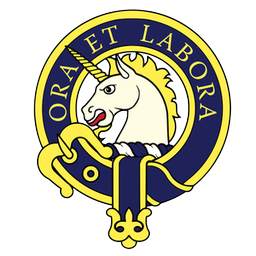Pipe band competitors: Please click here to access the entry form.
A Brief History of the Scottish Highland Bagpipe
(continued)
-Assembled by Neil Gillette 2/2019
The bagpipe has been part of Scottish military history reaching back to when pipers became an official part of a clan. Starting around 1580, about the time Shakespeare started to become prominent, a line of pipers with the last name of MacCrimmon came to be the official pipers to Clan MacLeod, on the Isle of Skye. While the MacCrimmons were the most famous of clan pipers, most clans had pipers and the communities built around clans supported pipers.
Scotland, as a country, tended to have a fragile economy. Service as a soldier was a good way to make a living, especially as a soldier for hire: a mercenary. During the 1600s, thousands of Highland Scots fought for many different countries, most notably, Sweden, but, also England. Sons of Clan Chiefs became officers in these armies, and brought with them fighting men, and, they brought their piper. Originally, pipers were not officially recognized in the armies: they didn’t have an official rank, and they weren’t paid for being pipers. Sometimes they were entered on the lists as “drummers.” The Scots Brigade, fighting for Sweden, became renowned as a tough and formable unit, and it had as many as thirty pipers.
In 1707 Scotland and England joined together to be “Great Britain.” The Scottish Regiments became part of the British Army. In 1725, six independent companies of Highlanders were raised to curb the raids on the Scottish Lowlands by Highlanders bent on taking cattle and loot. These companies were known as the Black Watch because their dark blue and green tartan kilts set them apart from the average British soldier who wore a red coat and white pants. The “Watch” was a paramilitary police force in the lawless Highlands. The Black Watch was a tough bunch, and pretty effective: It took a Highlander to stop a Highlander. In 1739, these companies were combined to form a regiment of over 1,000 men. There were ten companies, and each company had a piper. In one of their first battles against the French, the Highland Regiment was ferocious. The sound of the pipes let all know that the toughest regiment on the battlefield was near at hand.
About this time, a rebellion started in Scotland. It was funded by the French, who supported the aspirations of Prince Charles Edward Stuart, grandson of the deposed King James II. At age 24, Bonnie Prince Charlie, as he is affectionately known, landed in the west of Scotland, and successfully recruited many clans to help regain the British throne from King George II. The Jacobite Rebellion of 1745 (known as “The Forty-Five”) was really successful in the beginning: The Jacobite Army marched south into England, to within a hundred short miles from London. However, top units of the British Army, which had been fighting the French, were brought back to deal with this serious menace. The Highland Jacobites were forced north, out of England, and then further north, up to the far area around Inverness. They were disastrously defeated at the Battle of Culloden in April of 1746.
After the Rebellion was crushed, Parliament then passed a law which did three things: it banned weapons, it banned wearing tartan (the “plaid” cloth that kilts are made of), and it banned the bagpipes, declaring them “a weapon of war,” and, thus, outlawed. There was one exception to this law: You could have weapons, wear the kilt, and have pipers, but only if you served in the British Army. In the next thirty-eight years that the ban was in effect, there were two wars in which a total of over a dozen Highland regiments were raised. Later, in the 1790s, with Great Britain facing invasion by Napoleon, three dozen local militia regiments (called “fencible regiments”) were raised in Scotland for defense. Every company in every regiment may have had at least one piper.
Two transformational things happened: First, pipe music needed to help the needs of the regiment; since soldiers do a lot of marching, the music had to have a marching beat. Piobaireachd still had its place, but now, pipers and drummers needed to work together (this is still an imperfect and ongoing process). Second, bringing together all of the regiment’s pipers and drummers made for a pretty impressive display. When this exactly happened is a big question that we don’t have a lot of hard information about, but it did happen. The surprising thing is that it took so long for pipe bands to become officially recognized by the British Army, and to be supported (that is, paid for). This happened in 1854. At that time, the British Army regiments had six companies, so they paid for six pipers, one of which would be a “sergeant-piper.” However, the Highland Regiments wanted bigger pipe bands, so the officers contributed money to support more pipers–as many as eighteen pipers–it was a matter of pride. The size of pipe bands now tends to be six to twelve pipers, two to six snare drummers, one to four tenor drummers, one bass drummer, and usually one drum major (the person out front with a big stick–that’s called a mace).
Starting in the mid-1700s, and accelerating in the 1800s, Great Britain really became the British Empire. A lot of Scots immigrated and took their culture with them. This was especially true in Canada, but it was true just about everywhere. In the 1800s, community bands were very popular, but in a Scots community, pipe bands took hold. Businesses also sponsored pipe bands: For example, Muirhead & Sons Pipe Band, seven times World Champions, was sponsored by a lumber company in Scotland. The establishment of the Boys Brigade (much like the Boy Scouts in the U.S.) in Glasgow in 1883, had a profound impact on piping because most of the groups also had “junior” or “youth” pipe bands. Many a piping champion got his start in the Boys Brigade.
Having pipe band competitions started slowly and informally. In 1930, the Scottish Pipe Band Association was formed in Scotland. Early on, contests seemed to be dominated by Army Pipe Bands. But that soon gave way to civilian pipe bands. For years, the Glasgow Police Pipe Band was a leader (vying with the Edinburgh Police Pipe Band for the top spot). After years of outstanding performances (and a shake-up of the judges’ panel), a Canadian pipe band (the 78th Fraser Highlanders from Toronto) won the Worlds in 1987, the first non-Scottish pipe band to do so. The Simon Fraser University Pipe Band (Vancouver, BC) has won the Worlds six times. Since the year 2000, four Colorado pipe bands have competed at the World Pipe Band Championships (Colorado Youth, City of Denver, Fort Collins, and Centennial State).
Like solo piping competitions, the pipe bands that compete are organized according to playing ability. The top-level is Grade I (one); the bottom level is Grade V (five). Most newer bands start out in Grade V, then hope to win enough contests to be moved up to Grade IV. Sometimes, bands lose personnel and don’t meet the “size requirement” for a higher grade. Keeping enough good players in a band is challenging; this is especially true with keeping good drummers in a band. Not all pipe bands compete, but competing does make a band work harder, and that generally results in a better band. Most contests have two events: A Medley (this is the most creative because a pipe band can play any type of pipe tune in any combination), and a Set (usually a March-Strathspey-and-Reel set, also known as an “MSR” set).







